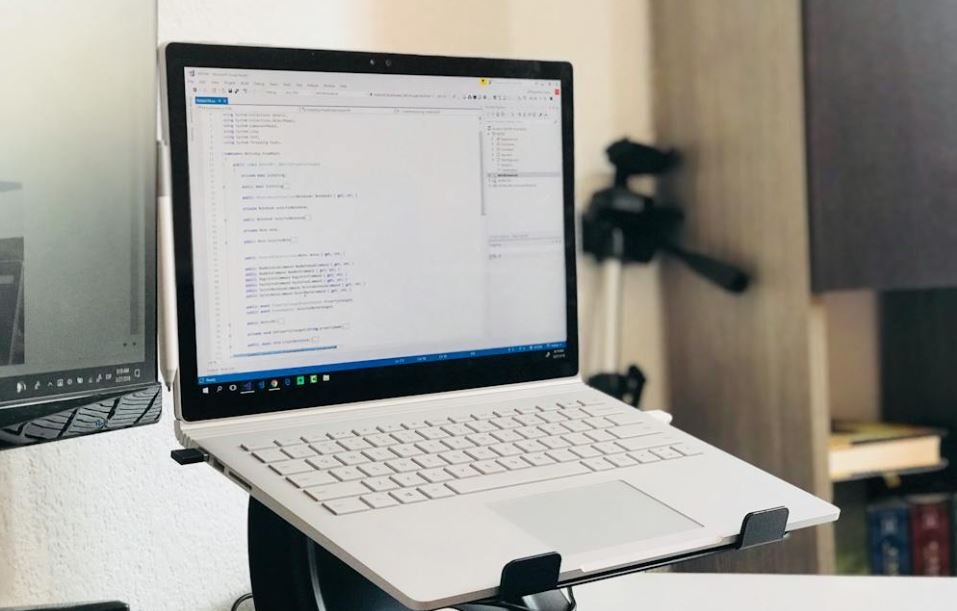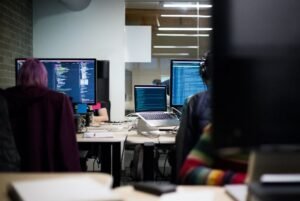Is OpenAI Open Source?
OpenAI is a leading artificial intelligence research laboratory that focuses on developing safe and beneficial AI technologies. While many people associate “open” with open-source software, OpenAI’s approach to openness is slightly different.
Key Takeaways:
- OpenAI is not completely open source.
- OpenAI offers some of its projects and research as open source.
- OpenAI actively encourages collaboration and interaction with the developer community.
- OpenAI balances openness with the need to protect sensitive information.
Understanding OpenAI’s Approach:
OpenAI’s primary mission is to ensure that artificial general intelligence (AGI) benefits all of humanity. While they believe in openness and the importance of sharing knowledge, their commitment to safety and security necessitates some restrictions on full open-source availability.
**OpenAI takes a selective approach to open source.** Despite not being completely open source, OpenAI does make certain projects and research available to the public. They believe that by sharing some of their work, they can foster collaboration and accelerate progress in AI development.
**OpenAI values collaboration and interaction with the developer community.** They actively engage with the broader AI community through partnerships, research collaborations, and engagement programs. OpenAI encourages external researchers to build upon their work and openly acknowledges the contributions of the community.
Understanding OpenAI’s Balancing Act:
To strike a balance between sharing knowledge and protecting sensitive information, OpenAI has adopted a cautious approach. By controlling access to certain technologies, they ensure responsible deployment and minimize potential risks.
**OpenAI focuses on benefits and safety.** Their aim is to develop artificial general intelligence that benefits everyone and respects human values. They emphasize the importance of using AI technologies for positive purposes while mitigating potential risks associated with their misuse.
OpenAI’s Open-Source Projects:
OpenAI has released several projects as open source to promote transparency and collaboration. Here are a few notable examples:
- GPT-2: A state-of-the-art language model capable of generating coherent and contextually relevant text.
- Gym: A toolkit for developing and comparing reinforcement learning algorithms, enabling researchers to design and test novel AI approaches.
- Spinning Up: A set of educational resources, including code examples and tutorials, to help developers learn and implement deep reinforcement learning algorithms.
OpenAI’s Collaborative Initiatives:
OpenAI actively supports collaboration through various initiatives and programs. Some of their notable collaborative efforts include:
- OpenAI Scholars Program: A research internship program that provides aspiring AI researchers with mentorship and support.
- AI Alignment Publications: OpenAI publishes research papers on AI alignment, aiming to thoroughly investigate potential risks and safety measures.
- OpenAI API: OpenAI offers an API to access their models, allowing developers to leverage their AI capabilities in their own applications.
Tables:
| OpenAI Open-Source Projects | Description |
|---|---|
| GPT-2 | A language model capable of generating coherent text. |
| Gym | A toolkit for developing and comparing reinforcement learning algorithms. |
| Spinning Up | Educational resources for implementing deep reinforcement learning algorithms. |
| Collaborative Initiatives | Description |
|---|---|
| OpenAI Scholars Program | Research internship program supporting aspiring AI researchers. |
| AI Alignment Publications | Research papers investigating AI risks and safety measures. |
| OpenAI API | An API to access OpenAI models for integration into applications. |
Conclusion:
While OpenAI is not entirely open source, their commitment to collaboration, transparency, and safety is evident through the release of various projects and initiatives that contribute to the AI community. By striking a balance between openness and security, OpenAI aims to shape the development of AI technologies for the benefit of society.

Common Misconceptions
Misconception 1: OpenAI is completely open source
One common misconception about OpenAI is that it is fully open source, meaning that all of its technology and code are publicly available and can be freely modified and redistributed. However, this is not entirely true. While OpenAI has made significant contributions to the open-source community and released various tools and models, not all of its technology is open source. Certain components and models developed by OpenAI are proprietary and not publicly accessible.
- OpenAI has released GPT-2 as open source.
- Dactyl, the robot hand project, is not open source.
- Recently, OpenAI launched OpenAI API, which is available through a subscription plan and not open source.
Misconception 2: OpenAI provides free access to all of its models and technologies
Another common misconception is that OpenAI offers free access to all of its models and technologies. While OpenAI has released some models as open source, not all models and technologies are freely available. Some of OpenAI’s advanced models may require a subscription or have usage restrictions depending on their intended purpose and application. Therefore, it is important to check the specific terms and conditions of usage for each model or technology provided by OpenAI.
- OpenAI provides free access to GPT-2 models through their open-source release.
- Access to OpenAI GPT-3 models may require a subscription.
- Commercial use of OpenAI models may have additional restrictions and licensing requirements.
Misconception 3: OpenAI’s research and development is driven solely by open-source contributors
Some people may mistakenly believe that OpenAI’s research and development efforts are solely driven by open-source contributors. While the open-source community plays a crucial role in contributing to and benefiting from OpenAI’s work, OpenAI itself brings together a team of researchers, engineers, and experts who work on various projects. OpenAI’s research and development efforts are not limited to external contributors but are driven by a combination of in-house talent and collaboration with the open-source community.
- OpenAI has a team of researchers and engineers working on various projects.
- External contributions are welcome but not the sole driver of OpenAI’s research and development.
- OpenAI collaborates with other organizations and institutions to advance their technologies.
Misconception 4: OpenAI’s open-source projects are fully supported and maintained
While OpenAI has released several projects and tools as open source, it is important to note that not all of these projects receive ongoing support and maintenance. Some projects may have limited resources for continued development or rely on contributions from the open-source community for updates and bug fixes. Additionally, OpenAI may prioritize certain projects over others based on their strategic goals or community demand.
- OpenAI’s projects like Gym, baselines, and Universe have active maintenance and support.
- Not all open-source projects released by OpenAI receive the same level of ongoing support.
- Community contributions play a significant role in maintaining and enhancing open-source projects.
Misconception 5: OpenAI’s open-source work enables immediate replication of its flagship AI systems
Many people assume that OpenAI’s open-source work allows for immediate replication of its flagship AI systems such as GPT-3. However, this is not the case. While OpenAI provides access to certain models, replicating highly advanced systems like GPT-3 is not as simple as downloading and running the code. Replicating and training models of such complex nature requires significant computational resources, expertise, and often access to proprietary data. Therefore, it is important to manage the expectations regarding the ease of replication of OpenAI’s flagship AI systems.
- Access to OpenAI’s models is often just the starting point for replicating and training complex AI systems.
- Replicating flagship AI systems like GPT-3 requires substantial computational resources and expertise.
- Data availability and quality also play a crucial role in successful replication of advanced AI systems.

Open Source Adoption Rates
In recent years, there has been a significant increase in the adoption of open source software across various industries. The table below provides a comparison of open source adoption rates in different sectors.
| Sector | Open Source Adoption Rate (%) |
|---|---|
| Technology | 78 |
| Education | 65 |
| Healthcare | 55 |
| Financial Services | 42 |
Open Source Contribution Breakdown
The success of open source projects relies heavily on community contributions. The following table illustrates the breakdown of contributions by type.
| Type of Contribution | Percentage |
|---|---|
| Code Development | 60 |
| Documentation | 20 |
| Testing & Bug Reporting | 10 |
| Community Support | 10 |
Benefits of Open Source Software
Open source software offers several advantages over proprietary solutions. The table below lists some of the key benefits of adopting open source software.
| Benefit | Description |
|---|---|
| Cost Savings | Open source software is typically free to use, reducing licensing and maintenance costs. |
| Flexibility | Users have the freedom to modify and customize open source software to suit their specific needs. |
| Security | Open source software often undergoes rigorous peer reviews, leading to more secure and stable solutions. |
| Community Support | Open source projects benefit from a vibrant community that provides support, guidance, and continuous improvement. |
Major Open Source Initiatives
The open source community has spearheaded various noteworthy initiatives that have revolutionized the software landscape. The following table highlights some key projects and their impact.
| Initiative | Impact |
|---|---|
| Linux | Influenced the development of operating systems and paved the way for open source collaboration. |
| Apache web server | Played a crucial role in the growth of the internet by powering a significant portion of web services. |
| TensorFlow | Revolutionized the field of machine learning by providing a powerful and accessible framework. |
| WordPress | Enabled millions of websites to be created easily and extended through its open source content management system. |
Open Source Software Licenses
A wide array of open source software licenses exists, each governing the use, modification, and distribution of software. The table below presents some popular open source licenses along with their key characteristics.
| License | Description |
|---|---|
| GNU GPL | Requires derivative works to also be released under the GPL, ensuring software freedom. |
| MIT License | Permissive license allowing the use, modification, and distribution of software with minimal restrictions. |
| Apache License | Grants extensive permissions to users while maintaining the copyright notice and disclaimer. |
| BSD License | Allows users to modify and distribute software under proprietary licenses if desired. |
Open Source Development Models
Open source projects follow different development models that influence their governance and decision-making processes. The table below outlines some common open source development models.
| Model | Description |
|---|---|
| Benevolent Dictator for Life (BDFL) | A single person or small group has final decision-making authority. |
| Meritocracy | Contributors earn decision-making power based on the merit of their contributions. |
| Consensus | All decisions are made through the agreement of the community. |
| Foundation-led | A governing foundation oversees and coordinates the project’s development. |
Open Source vs. Closed Source
Open source software stands in contrast to closed source or proprietary software. The table below highlights the key differences between these two approaches.
| Aspect | Open Source | Closed Source |
|---|---|---|
| Licensing | Permissive or copyleft licenses allow freedom to use, modify, and distribute. | Restrictive licenses grant limited usage rights and may prohibit modification or redistribution. |
| Transparency | Source code is accessible, enabling transparency and independent verification. | Source code is hidden, limiting external scrutiny and evaluation. |
| Community | Open collaboration fosters community development and support. | Development is closed and reliant on a limited group. |
| Cost | Generally lower cost, with no need for licensing fees. | Often includes licensing fees and additional costs. |
Open Source Success Stories
Open source software has facilitated numerous success stories, empowering individuals and organizations alike. The table below showcases some notable examples.
| Project | Impact |
|---|---|
| Mozilla Firefox | Became a popular and widely-used web browser, challenging the dominance of Internet Explorer. |
| MySQL | Evolved into one of the most widely used open source databases, powering numerous web applications. |
| Android | Brought open source to the mobile ecosystem, leading to its widespread adoption. |
| Raspberry Pi | Introduced affordable, credit-card-sized computers, making technology accessible to a broader audience. |
From the adoption rates and benefits of open source software to the different development models and success stories, it is evident that the open source movement has made a significant impact. The collaborative nature, flexibility, and cost savings associated with open source adoption continue to drive its popularity and innovation. As organizations and individuals recognize the power of open source, the software landscape becomes increasingly dynamic and inclusive.
Frequently Asked Questions
Is OpenAI’s software open source?
OpenAI provides an open source software development toolkit called “OpenAI Gym” which allows users to develop and test reinforcement learning algorithms. However, the core models and algorithms developed by OpenAI, such as GPT-3, are not open source.
Can I modify and distribute OpenAI’s models?
No, OpenAI’s models are not available for modification or distribution. OpenAI retains control over the models to ensure their responsible use and to prevent any potential misuse or abuse.
Are there any open source alternatives to OpenAI’s models?
While OpenAI’s models are not open source, there are several other open source models available in the field of natural language processing (NLP), such as BERT and GPT-2. These models can be used for various tasks and are developed by organizations and researchers who have made their work open source.
Can I access OpenAI’s models for free?
OpenAI provides access to its models through its API, which is a paid service. Users can sign up and pay for the usage of OpenAI’s models based on their individual requirements.
What are the benefits of OpenAI’s API?
OpenAI’s API allows developers to access and use powerful machine learning models without having to train them from scratch. This saves significant time and computational resources, enabling developers to focus on building applications and solutions using the models.
Is OpenAI planning to open source its models in the future?
OpenAI has expressed its intention to increase the amount of access to, and benefits from, its underlying models. While there are no specific plans to open source the models at the moment, OpenAI continues to explore ways to make its technology more accessible to the public.
How can I get started with OpenAI’s software?
To get started with OpenAI’s software, you can visit the official OpenAI website and explore the documentation and resources available. OpenAI Gym, in particular, provides a beginner-friendly environment for learning and experimenting with reinforcement learning algorithms.
Does OpenAI provide any support or assistance for developers?
OpenAI offers comprehensive documentation, tutorials, and a community forum to support developers using its software and API. Additionally, OpenAI has a customer support team that can assist with specific technical or billing issues.
Can I use OpenAI’s models for commercial purposes?
Yes, OpenAI allows the usage of its models for a wide range of commercial applications. However, it is important to review and comply with OpenAI’s terms and conditions to ensure proper and legal use of the models for commercial purposes.
What are the limitations of OpenAI’s models?
OpenAI’s models have certain limitations, such as occasional generation of incorrect or nonsensical responses, sensitivity to input phrasing, and potential biases inherited from the data they were trained on. It is important to carefully fine-tune and evaluate the models for specific use cases to mitigate these limitations.




